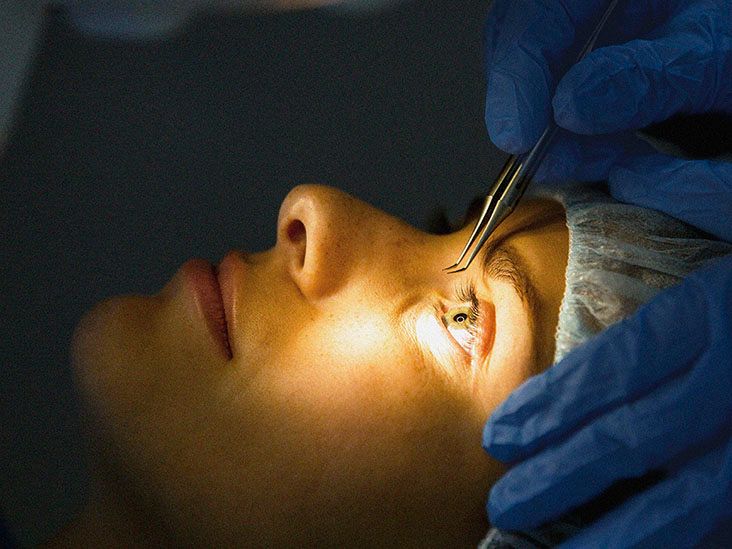An In-depth Consider the Different Eye Surgical Procedure Procedures Supplied by Knowledgeable Ophthalmologist
In the world of ophthalmology, the landscape of eye surgical procedure treatments used by proficient optometrist is as varied as it is advanced. From the commonly recognized LASIK eye surgery to the much less acquainted refractive lens exchange, each treatment holds the guarantee of vision adjustment and enhancement. As clients navigate the myriad alternatives readily available to them, recognizing the details of these medical interventions becomes vital in making informed choices about their eye health. The accuracy, innovation, and experience behind these treatments unveil a fascinating globe where science and art converge to redefine the opportunities of vision enhancement.

LASIK Eye Surgical Procedure
The accuracy of LASIK eye surgical procedure offers clients a transformative remedy for vision correction offered by competent ophthalmologist. LASIK, which stands for Laser-Assisted In Situ Keratomileusis, is a prominent refractive surgical treatment that improves the cornea to address typical vision troubles such as nearsightedness, astigmatism, and farsightedness. This outpatient treatment makes use of a highly specialized laser to exactly eliminate microscopic quantities of cells from the cornea, permitting improved concentrating power and more clear vision without the demand for glasses or get in touch with lenses.
During the LASIK procedure, the eye surgeon develops a slim flap on the cornea utilizing a microkeratome or a femtosecond laser. This flap is then folded up back to access the underlying corneal cells, which is reshaped making use of an excimer laser based upon the client's unique prescription. The flap is after that repositioned, where it adheres back right into location without the need for stitches, promoting fast recovery and minimal pain post-surgery. With its high success price and fast recovery time, LASIK eye surgical procedure has actually come to be a relied on technique for attaining long-term vision renovation.
PRK Procedure
An extremely reliable choice to LASIK eye surgical treatment is the PRK treatment, understood for its successful results in vision correction. PRK, or Photorefractive Keratectomy, is a kind of refractive surgical procedure that reshapes the cornea to deal with refractive errors such as nearsightedness, astigmatism, and farsightedness.
During the PRK treatment, the outer layer of the cornea, called the epithelium, is eliminated to access the underlying corneal cells. Unlike LASIK, which produces a flap in the cornea, PRK straight improves the surface of the cornea. Tallahassee Ophthalmologist. This makes PRK a suitable choice for individuals with thin corneas or other corneal abnormalities that might prevent them from undertaking LASIK
The epithelium regrows normally over a couple of days after the treatment. While the healing time for PRK is normally much longer contrasted to LASIK, several clients achieve excellent visual results with this treatment.
Cataract Surgical Treatment
Cataract surgical treatment is a typical procedure executed to remove the cloudy lens of the eye and replace it with a clear synthetic lens. This surgical procedure is commonly done on an outpatient Full Article basis and is extremely successful in recovering vision. The cloudy lens, which is called a cataract, forms progressively and can create obscured vision, problem seeing in the evening, and level of sensitivity to light.
During the cataract surgical treatment procedure, the eye doctor makes a small cut in the eye and uses ultrasound modern technology to separate the cloudy lens. The fragmented lens is after that carefully suctioned out, and an artificial intraocular lens (IOL) is placed in its place. This IOL aids to focus light onto the retina, boosting vision.
Individuals undergoing cataract surgery are normally awake during the treatment, which normally lasts around 15-30 minutes. Recuperation time is fairly fast, with numerous people discovering boosted vision within a few days. It is vital to comply with post-operative treatment directions provided by the eye specialist to guarantee optimum healing and vision end results.
Refractive Lens Exchange
Refractive Lens Exchange, additionally called lens substitute surgery, is a treatment that entails removing the eye's all-natural lens and replacing it with a fabricated lens to fix vision troubles. This surgical method is primarily utilized to deal with presbyopia, severe hyperopia (farsightedness), and other refractive mistakes that can not be sufficiently addressed with typical methods like glasses or call lenses. During the treatment, the all-natural lens is usually changed with a costs intraocular lens (IOL) that can fix refractive mistakes and, sometimes, even protect against the development of cataracts in the future. Refractive Lens Exchange is taken into consideration a effective and secure choice for people seeking to decrease their reliance on rehabilitative eyewear and boost their overall top quality of vision. By talking to a proficient eye doctor, clients can identify if they appropriate prospects for this kind of surgical treatment and go over the possible advantages and threats related to the treatment.
Corneal Transplant
Having dealt with refractive see this here errors via treatments like lens replacement surgery, experienced optometrist also offer corneal transplants as an option for sure eye conditions. A corneal transplant, additionally recognized as corneal grafting, includes replacing a damaged or infected cornea with a healthy and balanced contributor cornea to enhance vision. This procedure is typically recommended for people with problems such as keratoconus, corneal scarring, corneal ulcers, or corneal thinning.
During a corneal transplant, the ophthalmic specialist eliminates the central part of the damaged cornea and changes it with a contributor cornea that is very carefully matched for shapes and size. There are different kinds of corneal transplants, consisting of passing through keratoplasty, where the whole density of the cornea is changed, and partial thickness transplants like Descemet's removing automated endothelial keratoplasty (DSAEK) or Descemet's membrane layer endothelial keratoplasty (DMEK), which replace only the internal layers of the cornea.

Conclusion

In the realm of ophthalmology, the landscape of eye surgical treatment treatments supplied by experienced eye physicians is as varied as it is progressed.The accuracy of LASIK eye surgical procedure provides individuals a transformative service for vision modification provided dig this by proficient eye medical professionals.Refractive Lens Exchange, also understood as lens substitute surgery, is a procedure that involves removing the eye's natural lens and replacing it with an artificial lens to fix vision issues.Having attended to refractive errors through procedures like lens replacement surgical procedure, skilled eye doctors additionally offer corneal transplants as a service for specific eye problems.In verdict, knowledgeable eye doctors provide a range of eye surgical treatment treatments consisting of LASIK, PRK, cataract surgical treatment, refractive lens exchange, and corneal transplant.